An internationally recognized award-winning director, SERGIO NAVARRETTA is known for his exploration of the human condition. He digs deep into the heart of a people, of a culture, its soul, and shines a light with humor, honesty, compassion, and love. The fact that the script for his latest film, THE CUBAN, directed by Sergio and written by Alessandra Piccione, was recently selected to be featured in the permanent Core Collection of the Library of the Academy of Motion Picture Arts & Sciences, speaks volumes as to the quality and caliber of Sergio’s choices for projects.
Starring Louis Gossett Jr, Ana Golja, and Shohreh Aghdashloo, THE CUBAN is grounded in the friendship of Luis, a man suffering from Alzheimer’s and disconnected from the world, and Mina, a young Afghan-American woman going to school to become a doctor who, through food and the heartbeat of Cuban-fusion jazz, not only connects with Luis but reawakens the world for him while opening the windows of her own life. With parts of the film shot in Cuba, a challenge in and of itself, the film has a palpable heartbeat from beginning to end. Speaking as much to the Cuban culture of Luis as to the Afghan culture of Mina and her Aunt Bano as to the American or Canadian culture of Mina’s love interest Kris, the film is universally connectable and emotional as we see that parents all want the same for their children, everyone has a past or some sort of cross to bear or dream that was lost, but it’s never too late to look to the future in friendship and joy.
Speaking with SERGIO NAVARRETTA in this exclusive conversation talking about all aspects of the making of THE CUBAN, he is affable and engaging, with wonderful humor and sincerity. Passionate about his craft and about storytelling, Sergio is even more driven by the human connection that film gives us. From the accuracy of medical research and dementia/Alzheimer’s to casting to cinematography to the ebullient emotional resonance that crosses divides and connects us as one, we talked about it all and how at its core, THE CUBAN was driven by the color and vibrancy of cultures with a musical heartbeat courtesy of Hilario Duran that soars.
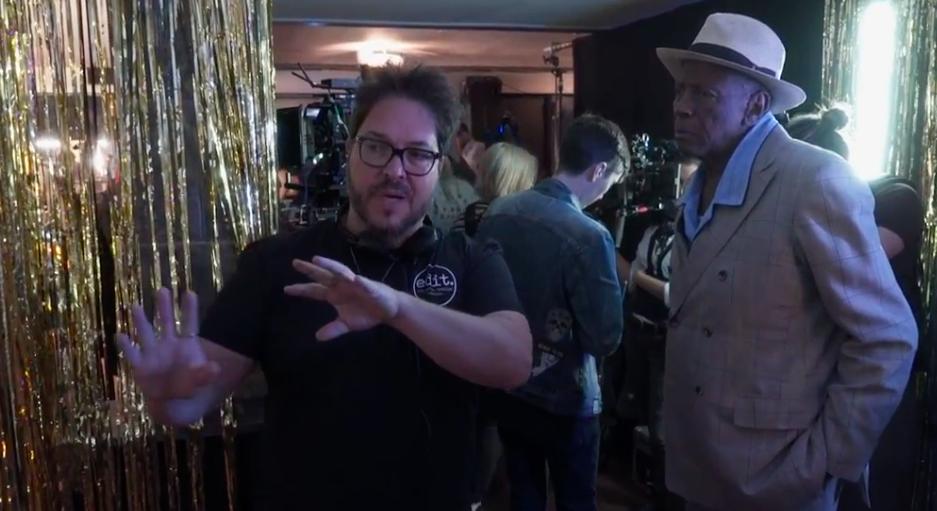
I’m very, very happy to be talking to you today, Sergio.
I’m honored. Your knowledge of cinema is remarkable and impressive. So, I feel like a pupil, a student.
I love this film so much. It lifts the spirit. It fills the heart. It’s multicultural, multi-generational; brought together, through music and food, which is always how the world connects. And, this is a film we need now, more than ever. And, the way that you integrate what medicine and science have been talking about for decades, bringing music, and that familiarity to those suffering from dementia and Alzheimer’s, I just think it’s spectacular, the way you’ve brought it all to life here.
I really appreciate that. Thank you. You don’t go in thinking about anything, really, when you’re prepping or shooting. For me, it was a very personal film. So, just thinking about it, we could have never predicted that, as we wrapped the movie and started our festival circuit, that we’d suddenly be in a global pandemic, that very much resembles a horrible theme movie. When I look back, it’s just unfathomable. But, you’re right. The scientific community and the medical community have been studying the neurological effects of music on the brain for ages. And just recently they were able to formalize it at a hospital in Toronto, at Baycrest Hospital. They’re sort of at the forefront of that research. And so, we had access to their research and to some of the scientists and researchers and doctors there. So, that was really helpful. And our local jazz station, as well, had a program called Music and Memory or something like that, where they were raising money to buy iPods for dementia patients. They would load up the iPods with their favorite playlist. What a wonderful way to help! It’s not curing the effect of dementia and Alzheimer’s, but it’s certainly making their quality of life a lot better and, in some ways, making them more aware and awake, and able to connect with the world around them. So, it’s very exciting.

And that’s the keyword. Connect. And that’s something that THE CUBAN does on a sensory and emotional level, Sergio. There aren’t enough plaudits for Hilario’s music. This Cuban jazz, the fusion, is just fantastic. I think I’ve listened to the soundtrack at least 10 times, in the past week and a half. You laugh!
That’s wonderful. I’m laughing because I thought I was the only one. You’d think I’d be sick of it, by now, but I’ve been playing it since the beginning. I just remember when we were shooting at five in the morning, just blaring it as I was preparing for the day ahead. I must have driven everybody around me crazy, but it’s just so infectious. And it really carries just the remarkable nature of the Cuban culture, which is jovial and uplifting. It transcends racial barriers. It’s a fusion of Afro-Cuban rhythms and Spanish flamenco guitar, and I’m sure several other things. So, when you mix it all together it reflects or communicates this beautiful, we’ll call it an experiment, but the Cuban culture is something really to look at, and there’s a lot we can learn from it.
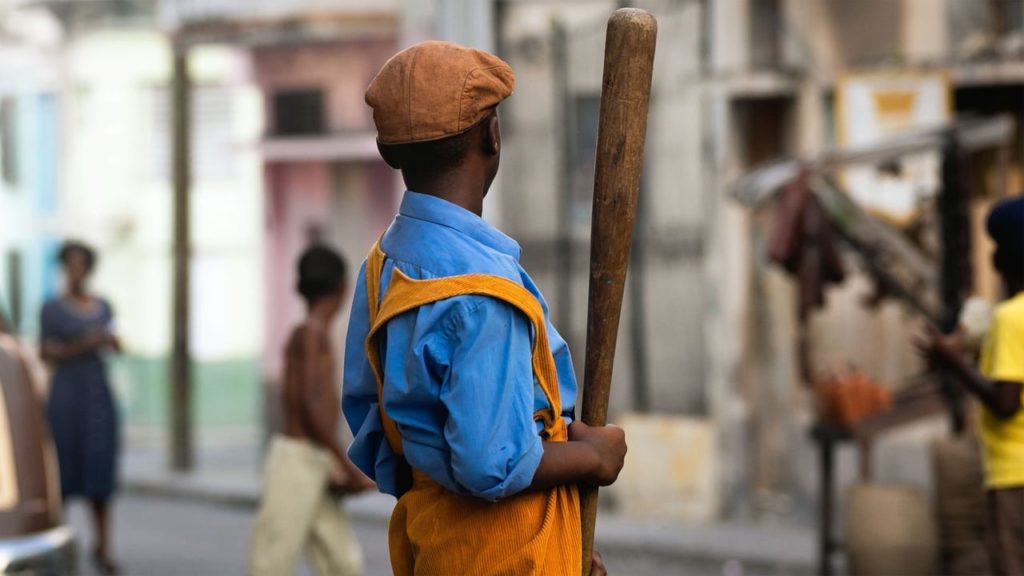
The vibrancy of the Cuban culture is spectacular. I know a lot of people who came over to the United States from Cuba at various points in history. And no matter what the circumstance, they brought that vibrancy and that resilience and that effervescence with them. You really capture that here in THE CUBAN, especially working with your cinematographer, Celiana Cardenas. Wow! Your cinematography and your visual tonal bandwidth in this film, Sergio, is outstanding. The memory flashback sequences, typically, as we always see in films, flashbacks. They get sepia, they go to black and white, they diffuse, but you went the total opposite. Whereas reality has a grayish pallor to it, closed windows, no light being let in, you go to a flashback, and it is eye-popping, kaleidoscopic polished, gorgeous. How did you go about designing this? What was your thought process, in coming up with this visual design and working with Celiana?
Well, it was professional love at first sight. Someone had recommended her to me. When we first met, I said, “I’m looking for something really special. Sort of an homage to an era in cinema that made me fall in love with it, the magic of it.” And on our first call, it started. It was scheduled to be a 15-minute call and it ended up being two hours. We just talked about Fellini and Antonioni and Kubrick, and a bunch of other things. And influences and inspiration that we both share. She really got the story. She connected to it on a personal level. And, I’m not embarrassed to say this, we worked really hard. We did a lot of planning, had a lot of conversations. And then, I’ll never forget. The last day we were shooting the scene, and I called, “Cut,” and, “It’s a wrap,” and we just embraced. What felt like an eternity was, literally, 10 minutes of sobbing. We just couldn’t contain ourselves anymore. It was so cathartic on so many levels. She was dealing with the loss of her mom and I was dealing with the loss of my father. So, this film for us was more than just, “Hey, wouldn’t it be cool to make a movie?” We put a lot of heart and soul into it. And every shot was thought out, deliberate. Every color on the wall, every piece of wardrobe. And when it wasn’t, that’s when I would get frustrated because it really, it all serves the overall merit of the story. This is an art form. I guess, one of the slight criticisms of the service industry in Canada is that people have become accustomed to churning things out and just making a lot of money every day and working on these big American productions. Maybe somewhere along the line, some of these craft people have lost their passion, so we always wanted to make sure that that passion was there every day. And it was. I played music between takes and, whatever I could do, to make the experience for them enjoyable. That’s what I was after because ultimately, and selfishly, the work ends up on the screen and that’s all that anybody really cares about. Nobody ever talks about the personal dramas behind the scenes and the adversities of making a movie. It’s anecdotal, and it’s not really important in the end.
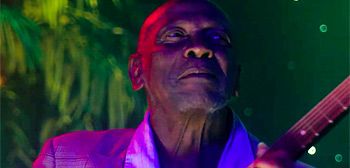
You don’t make a film like THE CUBAN, with this kind of result, without your heart being put into it. That shines through on screen, Sergio. This is, by no means, cookie cutter. Nobody was phoning it in, on this one. And you know what I mean, by phoning it in, because we’ve seen plenty of films where that’s done. And it shows. The attention to detail speaks so loudly here, especially in creating that third act, the climactic Havana Lounge sequence, which is the showstopper. That is the culmination of this whole story where, not only do we have Lou’s character of Luis, and we’ve got Ana’s character of Mina, and we’ve got Kris. We then bring in, full circle, Shohreh’s character of Aunt Bano. So, we have our three people, who have really been prisoners. Luis imprisoned by his mind, Aunt Bano imprisoned by her past and Mina, imprisoned by the expectations of her aunt, her uncle, her culture. And, with that sequence, everything converges. And it is such a perfect meld, Sergio. How long did it take you just to build out and create that entire Havana Lounge sequencing?
It took a lot of planning, for sure. And there was a lot of considerations. “Do we shoot it in Canada? Is it a present-day club or is it all in his mind? Or a combination, of both?” So, it did take planning. And I think that was one of the things that was the hardest to communicate to the crew because some of them probably didn’t get it until we were well into the editing process because, it’s so hard to articulate, “Oh, this is going to be reality but then it’s going to meld with fantasy and maybe some memories. And it will all be mixed together in this Fellini-esque kind of way, colorful way. Oh, and by the way, the dancers will be wearing, Tropicana-style, fantastical outfits, and whatnot.” That was, I guess, what we had the most discussions on. “When are we in the present day and when are we not? When are we in his mind?” So, I’m really proud of that scene, actually. And it took us two days to shoot everything in that club. It was intense. We had limited time, limited resources and we had to get it done. And coordinating the band, the actors, all that action that happens. The stunt, when he pushes him to the ground, it took a lot of coordinating and I give a lot of credit to my AD team; to Pazz Neglia, who’s a seasoned first AD, and his team because they were able to help coordinate that. Along with Celiana we had that shorthand way of communicating, and trust, with each other. Then, of course, the relationship I built with the actors helped a lot, as well. So I think it was what I call a perfect storm. When I watch it back, I still don’t know exactly how it all came together. I’m not a woman, so I don’t know what it feels like to give birth, but I can imagine when you’re in labor and you’re in the throes of it, it just happens. And then, six months later, you have this moment of insanity where you say, “Let’s do that, all over again.” It’s kind of what it felt like.
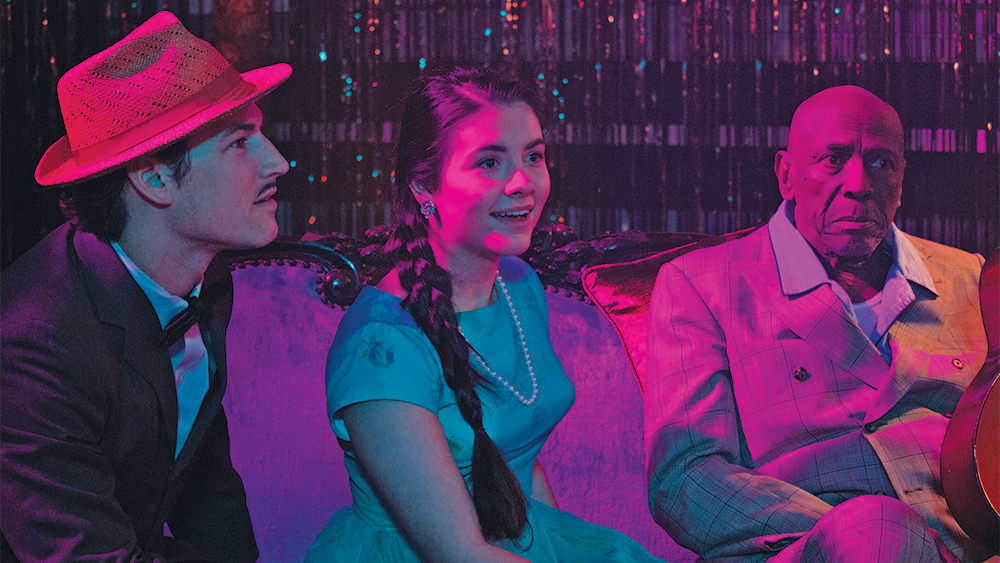
It’s exquisite. I have to ask you, did you do a pre-record for the band, or were they playing live during that sequence?
I’m going to give it away, but it was pre-recorded. It was my intention to shoot it live, and then, all the challenges were presented to me. They said, “Well, if we do this, then you’re going to lose this.” So, there were a lot of compromises that would have had to have been made. So we had the good fortune of having all the music rights locked in, in advance, before we even shot. So we went into the studio with Hilario [Durana] and the band before prep. So while we were prepping, I had that music playing in the background. While we were on set, it was playing all the time. But to answer your question, the band is real. They were playing along. So that was great and very helpful. And, it was a lot of fun!
I know that’s always tricky when you’ve got a musical sequence and you want to have the singing being performed, much as what Renee Zellweger did in Judy. That was shot live, but there was also a pre-record just in case, because of all those little extra things that can happen.
In the nursing home, The Guantanamera, that’s all live. And then the final credits scene starts off live and then we enhanced it with layer tracks of other instrumentation and mixed it. But yeah, wherever we could, we used as much authentic location sound as possible.
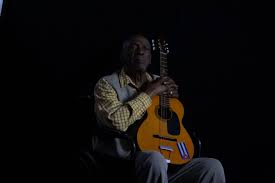
Talk to me about casting, here. It’s a tour de force, masterclass in acting by Lou, and it is definitely, personally, I think it’s worthy of an Oscar nomination. He’s that strong, here. I love Lou. Every year, at TCM Film Festival, we spend forever talking. But, you’ve got Lou. And this film really rises and falls on his performance as Luis and Ana Golja’s performance as Mina. If you don’t have chemistry between those two, you don’t have a film.
Wow! Wow! I think he’s an amazing man. But that is true.
How challenging was the casting? Number one, getting Lou? And then, finding Ana, and melding them. Then you get Shohreh, who’s perfect, just perfect, as the immigrant aunt.
Generally, if I can help it, I don’t cast conventionally, in that we didn’t have a casting director. We didn’t do auditions because I find the whole process in some ways, humiliating, both for me and for the actor. So in this case, it started off as a short film. It was developed from the ground up. So my collaboration with Alessandra Piccione, the writer, was very close. As she was writing, we were constantly in communication. I had the cast in mind right from the beginning, so she had those actors in mind while she was developing the characters. Then we went out to them personally, when we could. With some actors, we went to their agents and said, “We’re doing this project. This is what it is.” It’s a unique kind of serendipitous situation here. Sometimes you go into 30 different cast members and finally one clicks and it all ends up working out. With this film, I really went after the cast that I wanted, and thankfully they all said yes. I’m extremely blessed and it’s surreal. When you look at [Lou’s] body of work – today, he was nominated for an Emmy for his role in Watchmen, which is fantastic news.
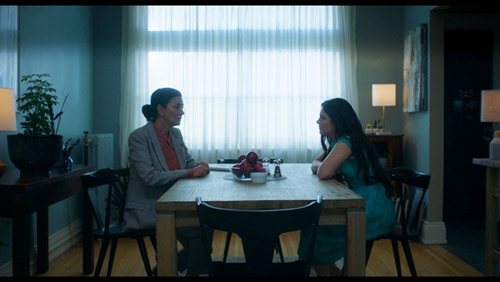
Shohreh I met at TIFF when she did a movie called The Stoning of Soraya M. I was a huge fan of her work and we sort of vowed to find a way to work together. And 10 years later I presented this role to her, and it really spoke to her. She was also dealing with personal matters around her father who had passed away. He had dementia. So, here we are again, just having a personal connection to the story. We spent about six months with her because she was shooting The Expanse in Toronto. We spent a lot of time having dinners together and just talking about the nuances of Afghan culture. Then we brought in some of the other actors that I call my Afghan family and we just, we really got into the details of that culture. There’s a full spectrum. So I wanted to make sure that I understood the subtext and the dynamics that are happening at the dinner table, and all that wonderful stuff. It’s just such a rich culture that you can’t pretend it. You can’t just set out to represent that culture without fully understanding it. So, we immersed ourselves completely in it. Having that level of talent around you only inspires you even more. So on the tough days, you have Lou Gossett Jr. coming on set and dancing and telling jokes, and lifting everybody’s spirits. Then I call, “Action,” and you get that sort of brilliance in his eyes. It’s a very nonverbal role, right? And he pulls it off beautifully.

He does indeed. The way I described it was, essentially, he tempers an emotional expressiveness, but counters that with a catatonic expressionless mode. He just gives just enough, just enough of a glimmer, as he slowly starts coming to life. But then his ability to sit there, almost catatonic. To see that, and to see the calibration that he brings, it is amazing. But, your detail, here again, the devil is in the details, Sergio. Learning as much as you could about Afghan culture and bringing that in, and then you also show us the commonality between so many cultures, in terms of what they want for their children, the expectations for their children. The fears that they have. My grandparents came to the United States from Germany before World War I. I had relatives in Germany during World War II coming over to America. My grandparents were here during the Depression. All of that informs, and every culture can tap into those kinds of elements. And it makes this a very universal film. Very universally connectable and emotional. I just can’t applaud you enough for finding that marriage, that combination, that magic. Because it’s perfectly, perfectly put together.
Thank you. Thank you. I think the writer, myself, and most of the people involved have the advantage of growing up in Toronto, being first-generation immigrants in Canada. And growing up in a multicultural city like Toronto, we see the commonalities, we see the things that we share, and stories like this are universal because the immigrant experience is very similar. It doesn’t matter – that displacement, that potential isolation, buying into the American dream, and then maybe, being disappointed. We all experienced that. The fact that there is that age gap and cultural differences, they come together through art. That’s one of the core messages. That’s one of the things I love most about this industry is that, wherever I’ve been in the world, even if I meet other filmmakers and we don’t speak the same language, we understand one another. There’s a corpsman element to us. We’re all unique in our own way, and all different, but there’s something that brings us together. And that’s this art form, that we’re all in love with. And, at least the filmmakers that I know, all are observers of the human condition and really have an interest in making films that are commentaries on that. It goes back to neorealism, right?
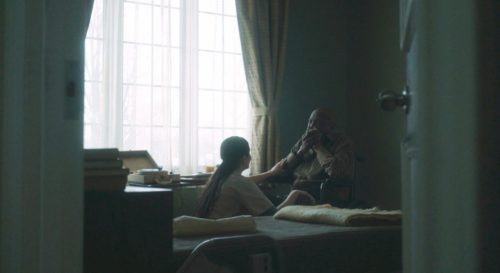
Absolutely. I’d be remiss not to ask you about your editing. Jane MacRae has done such a beautiful job with the editing. It’s such a fine balance here, between Luis when he’s cogent and when he’s not. It’s calibrated perfectly. So I’m curious, how challenging was that? And, of course, while I’m sure you wanted to just have the music for the entire film and didn’t want to cut away from the Havana Lounge at all, how challenging was the editing process to find this perfect pacing with this film, and pacing which has a lyricism to it.
Jane is an incredible collaborator. If you meet us side by side, you’d say there’s no two people more different. But, we get along so well and I rely on her heavily. I really respect her opinion. She’s extremely bright and really understands this art form. She also has a musical background, so that was helpful. We would sit in the editing room and just say things like, “How verbal do we want the Luis character to be? When does he come to life? How gradual, should we do this?” And someone like Lou is a master. He knows. He’ll give you that range and then you can decide that later on in editorial. Or, the simple things like, “How nasty do we want the nurse to be?” or, “How empathetic do we want Mina to be?”. We can play with those things in editing. At a certain point, we got frustrated doing the first cut because it wasn’t flowing. And it was about two and a half hours long. So we just said, “Let’s just board it. Let’s just put cue cards all over the wall and let’s figure this thing out.” In the middle of the night, you get these crazy ideas like, “What if we move this scene, over here? And what if we cut that?” It’s an amazing part of the process and often overlooked. Honestly, a lot of the magic does happen in editing and it determines the fate of the movie. The pacing, characterizations, all that stuff is resting on the editor and the director. The other thing that Jane does well is that she understands sound. A lot of editors don’t even bother with sound because it’s not their thing. But Jane will. She’ll say, “I’m going to cut this scene, and I’m going to lay in some basic sound effects and alternative music that you planned to have in this scene and you let me know what you think.” So, it’s really, somebody who goes the extra mile. And then I’ll say to her, “We’ve been editing two weeks, let’s take a week off and do nothing related to the film, at all. Let’s just go away, back to our lives, and then come back to it with fresh eyes.” We did that several times. So it sort of drags on, in a sense. But it’s just how we want it to work. We really want to take our time, and make sure we’re making the right decisions. And, it worked out well. I don’t think this new world of television, where everything is producer driven and budget specific and “We’ve got to get this out in 12 weeks” is for me. I can’t imagine working like that on a film like this.
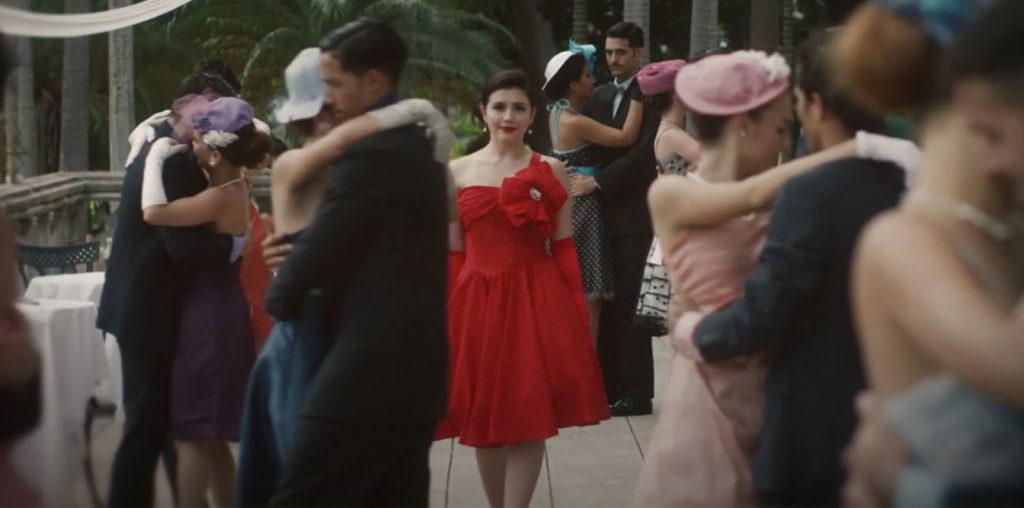
No. And you need that time in editing to take a step back, to not look at it, so you can come back to it with fresh eyes, and a fresh beat; to make sure that you’re hitting those beats that you want to hit, and that you need to hit because so much of that is so important. How long are you going to hold a shot of Lou before he starts getting a twinkle in his eye, a glimmer of recognition and connection? You don’t want to overkill it, but then, you’ve got to hold it long enough so that we see that cognitive awakening. And that’s tricky. That’s tricky. That’s great work between Celiana and her lensing, and Jane’s editing. Sergio, before I let you go, I’ve got to ask you, what did you learn about yourself as a filmmaker in making THE CUBAN?
Wow. Well, I’ve been giving a lot of thought to it now that we’re in a global pandemic. It really taught me to trust my instincts, follow my heart. It taught me patience. And, shooting in Cuba taught me that no matter how solid your plan is and your crew is, sometimes you just have to throw the plan out the window, and something better could potentially come along. So, in that surrendering, I came up with some of the scenes, like her walking in the water. All that stuff really came out of just sheer frustration of not being able to get what I wanted. I always loved the line that Quincy Jones says, “When you’re in the studio, always leave the door open. There’s always that 20% of God, or creativity or whatever, to come in.” And so for me, that’s what I learned. Trust the process and know that it’s not all my shoulders. This is a collective art form and sometimes there’s timing and good luck. There’s this sort of ethereal, intangible thing out there called creativity that is at work that has little to do with us.
by debbie elias, exclusive interview 07/28/2020











